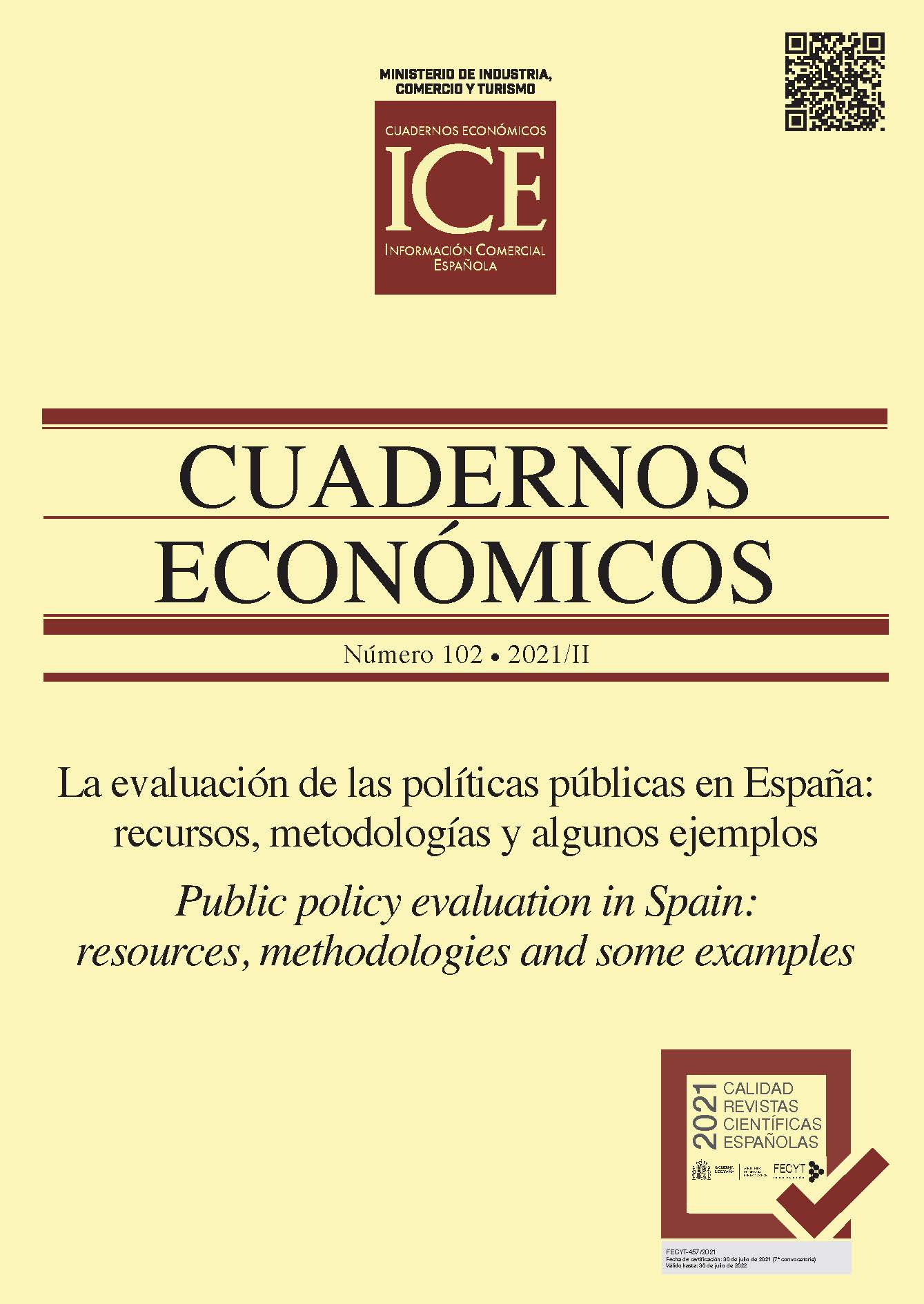Educational reinforcement measures in literacy: the case of the Dyslexia Aid program in the Comunidad de Madrid
##plugins.themes.bootstrap3.article.sidebar##
Downloads
##plugins.themes.bootstrap3.article.main##
In this article, we evaluate the Dyslexia Aid program of the Community of Madrid in the 2018-
2019 academic year, aimed at primary school students with reading and writing difficulties. The
program consists of two tools: a) a test to check students who have literacy difficulties and b) up
to 42,000 exercises on a digital platform to work and reinforce these skills. 7.55 % (n = 1,022) of
the students had reading and writing difficulties. The results of the analysis show that there is no
correlation between the participation of the school in the program and the performance of the
students at these schools in the external and standardized tests of Mathematics and Language, but
there is in the case of English. When disaggregating the results by gender, a strong and positive
association of the Dyslexia Help project is observed for girls in Language arts and English (and,
as one might expect, not so much in Mathematics), while for boys it is only significant in English.
However, schools that participate in this intervention have better results and students from a
higher socio-economic background. The different characteristics of the schools could explain
their participation, which was voluntary, in the Dyslexia Aid program. The future line of research
proposes to exploit through a differences-in-differences analysis that there has been a new call
for the program in the 2021-2022 academic year, in which new schools have been incorporated.
##plugins.themes.bootstrap3.article.details##
Angrist, J. D., & Pischke, J. S. (2014). Mastering Metrics: The Path from Cause to Effect. Princeton University Press. https://ideas.repec.org/b/pup/pbooks/10363.html
Arnett, A. B., Pennington, B. F., Peterson, R. L., Willcutt, E. G., DeFries, J. C., & Olson, R. K. (2017). Explaining the sex difference in dyslexia. Journal of Child Psychology and Psychiatry, 58(6), 719-727.
Beg, S., Lucas, A. M., Halim, W., & Saif, U. (2021, en prensa). Engaging Teachers with Technology Increased Achievement, Bypassing Teachers Did Not. American Economic Journal: Economic Policy. https://www.aeaweb.org/articles?id=10.1257/pol.20200713
Carrillo-Gallego, M. S., Alegri?a, J., Miranda, P., & Sánchez, N. (2011). Evaluacio?n de la dislexia en la escuela primaria: Prevalencia en espan?ol. Escritos de Psicologi?a, 4(2), 35-44.
Felfe, C., Nollenberger, N., & Rodríguez-Planas, N. (2015). Can’t buy mommy’s love? Universal childcare and children’s long-term cognitive development. Journal of Population Economics, 28(2), 393-422.
Fryer, R. G., & Howard-Noveck, M. (2020). High dosage tutoring and reading achievement: Evidence from New York City. Journal of Labor Economics, 38(2), 421-452.
Gao, Q., Wang, H., Mo, D., Shi, Y., Kenny, K., & Rozelle, S. (2018). Can reading programs improve reading skills and academic performance in rural China? China Economic Review, 52, 111-125.
González de San Román, A., & De la Rica, S. (2016). Gender Gaps in PISA Test Scores. The Impact of Social Norms and the Mother’s Transmission of Role Attitudes. Estudios de Economía Aplicada, 34(1), 79-108.
Goux, D., Gurgand, M., & Maurin, E. (2017). Reading enjoyment and reading skills: Lessons from an experiment with first grade children. Labour Economics, 45, 17-25.
Guryan J, Kim J. S., & Park, K. H. (2016). Motivation and incentives in education: Evidence from a summer reading experiment. Economics of Education Review. 55, 1-20.
Hanushek, E. A., & Woessmann, L. (2011). The Economics of International Differences in Educational Achievement. In E. A. Hanushek, S. Machin, & L. Woessmann (Eds.), Handbook of the economics of education, vol. 3, (pp. 89-200). North Holland.
Hernández-García, F., Hernández-Pallarés, L. A., Valencia-García, M. T., Ramírez-Lajarín, F. J., & Abril-López, M. A. (2018). Guía de dislexia del inglés para alumnos con dislexia y otras dificultades. Consejería de Educación, Juventud y Deportes de la Región de Murcia.
Jiménez, J. E., de la Cadena, C. G., Siegel, L. S., O’Shanahan, I., García, E., & Rodríguez, C. (2011). Gender ratio and cognitive profiles in dyslexia: A cross-national study. Reading and writing, 24, 729-747.
Jime?nez, J. E., Guzma?n, R., Rodri?guez, C., & Artiles, C. (2009). Prevalencia de las dificultades especi?ficas de aprendizaje: La dislexia en espan?ol. Anales de Psicologi?a/Annals of Psychology, 25(1), 78-85.
Lavy, V., Kott, A., & Rachkovski, G. (2021). Does Remedial Education at Late Childhood Pay Off After All? Long-Run Consequences for University Schooling, Labor Market Outcomes and Inter-Generational Mobility. Journal of Labor Economics.
Machin, S., McNally, S., & Viarengo, M. (2018). Changing How Literacy Is Taught: Evidence on Synthetic Phonics. American Economic Journal: Economic Policy, 10(2), 217-241.
Muralidharan, K., Singh, A., & Ganimian, A. J. (2019). Disrupting Education? Experimental Evidence on Technology-Aided Instruction in India. American Economic Review, 109(4), 1426-1460.
Rello, L. (2018). Superar la dislexia. Paidós.
Rello L., Baeza-Yates R., Ali A., Bigham, J. P., & Serra, M. (2020). Predicting risk of dyslexia with an online gamified test. PLOS ONE, 15(12). https://doi.org/10.1371/journal.pone.0241687
Shaywitz, S. E., & Shaywitz, B. A. (2003). Dyslexia (specific reading disability). Pediatrics in Review, 24(5), 147-153.
Siegel, L. S. (2008). Morphological awareness skills of English language learners and children with dyslexia. Topics in Language Disorders, 28(1), 15-27.


